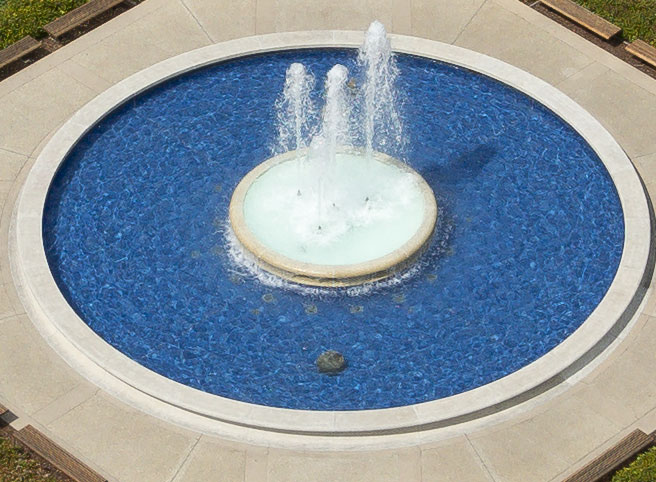Nikon D800E vs Nikon D800
Added to my review of the Nikon D800 / D800E is a comparison at f/5.6 with the Zeiss 21mm f/2.8 Distagon. More stuff coming.
Having examined some other D800E images, I think it is clear that the D800E is a remarkable camera. I eagerly await my own D800E and D800 for more extensive comparisons.
Update! Reader David S pointed out that more aggressive sharpening of the D800 image can produce very similar sharpness to the D800E. I plan on updating the page to show variants of the D800 image, one with the D800E level of sharpening, and others with increased “Amount” of sharpening.
Get the D800 and D800E at B&H Photo. See my Nikon gear page and Zeiss page.
Roderick W writes:
I am fascinated by your D800/D800E comparison shot. (Taken incidentally with my favourite wide angle lens.) I have looked closely at the actual pixel crops expanded on my monitor. This is no more than I normally do in final processing of my chosen images. I like to understand the basis of ‘texture’ in final images. There are various ways spurious contrast, detail and edges can be introduced in processing and I try to avoid them; it was ever thus with film and wet processing in the dark room. My main area of photography these days is plants and their environment. I find foliage texture and the rendition of distant flowers and foliage strongly influences my response to an image. If the texture is wrong the picture is unacceptable.
I have been pondering why texture is so critical. My conclusion is that it is processed differently from detail in the visual system and that it is remembered separately. When scanning a hillside of vegetation for a particular plant experts will say ‘I think it is there’. They cannot exactly see it but a change in texture gives them this educated hunch. And it works! Many times when driving with botanists the cry “Stop!!” goes up. Someone feels something needs looking at. Lily experts see lilies while orchid experts see orchids that are invisible to each other and to non-experts. Somewhere in the computer in our heads we see things our conscious brain cannot see and can compare them with similar memories. . So if the texture in a picture is wrong it triggers a deep unease in someone familiar with the subject.
In your comparison of the D3X and D800 the clumping or as I call it ‘clotting’ of fine detail by the D3X is just what I have seen since it came out. This limits the cropping possible for acceptable images in the D3X. The D800 is thus a great advance.
Now in your current comparison the D800E leaps ahead! However I have a reservation. The texture of the foliage and ground cover mulch in the D800E image feels wrong. On close examination I see false colour in the mulch, in the third crop particularly behind the lamp on the pole. This gives a ‘sparkly detail’. Once seen it is present elsewhere. Above this in the hedge against the building there are bright green artefacts giving a false fine texture. Having seen these I looked into the foliage crop. I see it filled with false green fine detail. I now know why on initial viewing the D800E image looked fantastic but made my botanist’s eye uncomfortable. The detail should have shouted out the tree’s name. But it did not! Now I know why – it is not the tree texture I am seeing but an artifact.
The D800 image is probably truer to what I would have seen with my eye. Softer at that viewing distance. Do you see the same things? It could be worth taking along binoculars or a telescope to view such a tree with the eye to load your memory in order to later compare the non-photographic image with the digital one. I have done this with prints to learn how NOT to process them. This reminds me of the care we had to take in years gone by when making videos down microscopes, the microscope controls had to be differently adjusted to balance the screen and eyepiece images. False detail was easily created.
I shall watch your future comparisons with great interest as I don’t want to buy the wrong D800. The ‘E’ looks initially so much better, but… I will look out for images with fine mown grass. Taken at a shallow angle this tests every camera, lens and processing schedule. It is very sensitive to over enthusiastic processing. Granular grass is a common fault in gardening magazine pictures. Perhaps moss in your Redwood groves would provide the same challenge.
You have me on the edge of my seat waiting for this comparison. Thank you!
DIGLLOYD: I agree that the D800/D800E is a significant advance over the D3x in terms of its ability to resolve the finest details to avoid the “clotting” effect in grass, pine needles, etc.
The main negative that I have observed so far is the color aliasing, those “sparkly details”. That issue is prominent with the Leica S2, Leica M9. and any medium format camera without an optical low pass filter, as I show in my Guide to Leica. Those effects are a tradeoff for the increased contrast of fine details. At present, the color aliasing seems to be the dominant factor that would affect the D800/D800E decision, as so far I have not been able to generate any significant moiré as I had expected.






























